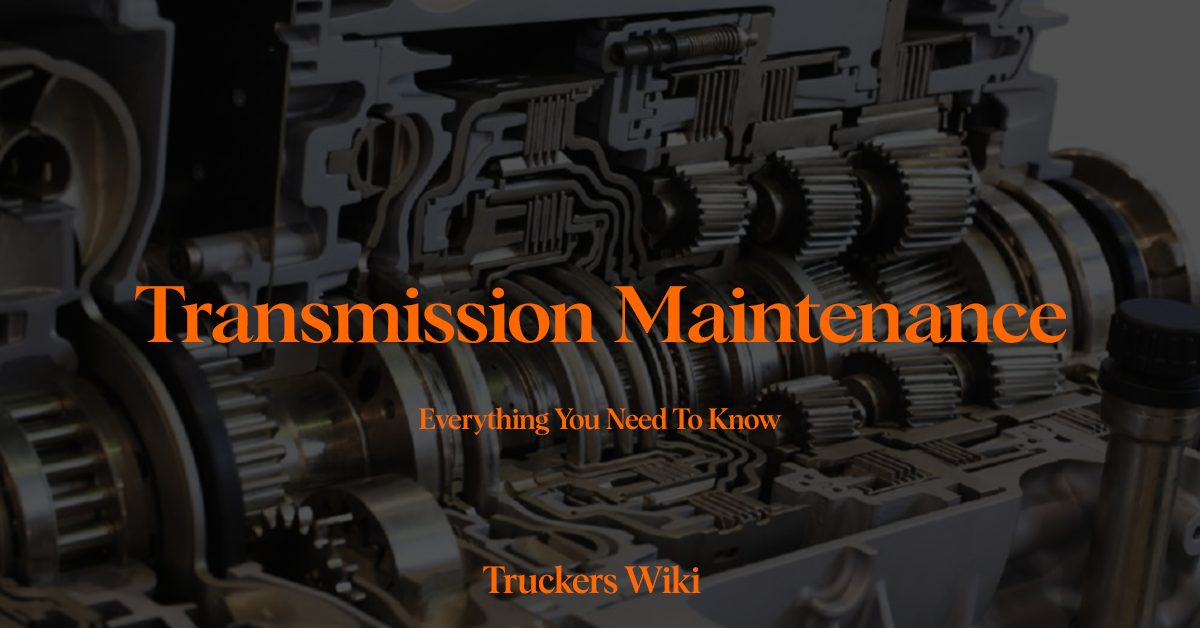
Table of Contents
Semi Truck Transmission Maintenance and Troubleshooting
Proper transmission maintenance is a cornerstone of efficient truck operation. The transmission, a crucial component of the drivetrain, facilitates the transfer of power from the engine to the wheels. Regular maintenance ensures optimal performance, extends the transmission’s lifespan, and reduces the risk of costly breakdowns.
Role of the Transmission in Truck Performance
The transmission controls gear selection, allowing the driver to optimize power delivery for various driving conditions. A well-maintained transmission ensures smooth gear shifts, efficient power transfer, and improved fuel economy.
Overview of Common Transmission Issues
Common symptoms include slipping gears, rough shifting, delayed engagement, and unusual noises. Addressing these problems promptly not only maintains truck performance but also prevents more extensive damage to the transmission and associated components.
Types of Truck Transmissions
- Manual Transmissions: Often preferred by experienced drivers for greater control over gear selection and engine braking.
- Automated Manual Transmissions (AMTs): Combines manual control with automation for smoother shifting and reduced driver fatigue.
- Automatic Transmissions: Offers simplified operation, ideal for drivers transitioning from passenger vehicles.
Components of a Truck Transmission
- Gears and Gear Ratios: Different gears allow the engine to operate efficiently across various speed ranges and loads.
- Clutch System (for manual transmissions): The clutch engages and disengages the transmission from the engine, enabling smooth gear changes.
- Transmission Fluid and Cooling: Transmission fluid lubricates and cools internal components, preventing overheating and reducing friction.
Transmission Maintenance Best Practices
Regular Fluid Checks and Changes
- Importance of Clean and Adequate Transmission Fluid: Transmission fluid lubricates, cools, and cleans internal components. Regular checks ensure fluid quality and prevent excessive wear.
- Recommended Intervals for Fluid Changes: Follow manufacturer recommendations for fluid changes. Fresh fluid helps maintain optimal performance and extends transmission life.
Clutch Inspection and Adjustment (for manual transmissions)
- Signs of Clutch Wear: Symptoms like slipping, difficulty shifting, or a vibrating clutch pedal indicate wear. Timely inspection prevents further damage.
- How to Properly Adjust the Clutch: Proper clutch engagement and disengagement ensure smooth gear changes. Adjustments should be made by experienced technicians.
Cooling System Maintenance
- Checking Transmission Cooler and Lines: Ensure proper coolant flow through the transmission cooler to prevent overheating.
- Flushing the Cooling System: Regularly flush the cooling system to remove contaminants and prevent corrosion, ensuring efficient heat dissipation.
Transmission Troubleshooting
Common Transmission Problems and Symptoms
- Slipping Gears: Occurs when the transmission unexpectedly changes gears or fails to stay engaged. Can indicate worn clutches, bands, or solenoids.
- Rough Shifting: Jerky or hesitant shifts may result from low fluid levels, damaged sensors, or worn components.
- Delayed Engagement: A delay between shifting and movement can indicate low fluid, hydraulic issues, or worn parts.
- Unusual Noises: Grinding, whining, or clunking noises may indicate internal damage or worn bearings.
Diagnosing Transmission Issues
- Using Diagnostic Tools and Software: Advanced diagnostic tools help pinpoint issues by reading transmission codes and data.
- Road Testing and Observations: Experienced technicians perform road tests to replicate symptoms and gather additional data.
Addressing Minor Issues
- Low Fluid Levels: Regularly check and maintain proper fluid levels to prevent damage caused by inadequate lubrication.
- Faulty Solenoids: Malfunctioning solenoids can cause shifting problems. Replacing these components restores smooth operation.
Major Transmission Repairs
Rebuild vs. Replacement
- Factors Influencing the Decision: Consider factors like the extent of damage, cost-effectiveness, and availability of replacement transmissions.
- Costs and Benefits of Each Option: Rebuilding may be cost-effective but time-consuming, while replacement offers quicker restoration but could be pricier.
Finding a Reliable Transmission Shop
- Research and Recommendations: Seek referrals from fellow truckers or fleet managers for trustworthy transmission repair shops.
- Evaluating Repair Shops: Look for ASE-certified technicians, a solid reputation, and transparent communication regarding repairs.
Preventive Measures for Transmission Health
Proper Shifting Techniques
- Smooth Shifting: Avoid abrupt gear changes or excessive engine revving, reducing strain on the transmission.
- Engine Braking: Utilize engine braking to minimize stress on the transmission when descending hills.
Avoiding Overloading and Excessive Towing
- Weight Limits: Adhere to truck’s weight capacity to prevent excessive strain on the transmission and drivetrain.
- Towing Guidelines: Follow recommended towing limits to prevent transmission overheating and premature wear.
Regular Maintenance Schedule
- Scheduled Inspections: Follow a maintenance schedule for fluid checks, adjustments, and overall transmission health.
- Preventive Maintenance Program: Establish a comprehensive program that includes transmission care as part of routine checks.
5 Common Heavy-Duty Truck Transmission Problems by Wayne Truck.
Here is a good article about Best Semi-Truck Automatic Transmission, it’s a Buying Guide by Truck Freight.
Learn about the different types of Semi Truck Tires here.
Learn more about Diesel Engine + Maintenance here.
Learn more about Brake System here.
Learn about Pre-Trip Vehicle inspection here.
Here is a Preventive Truck Maintenance a Comprehensive Guide.
Listen to The Article Here
Audio Article Everything you need to know Transmission Maintenance
Last modified: February 24, 2024

